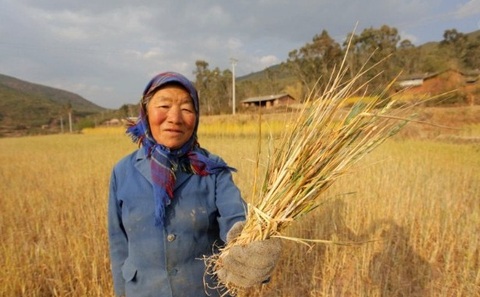Water shortage gets worse in China as more power plants to be built
 0 Comment(s)
0 Comment(s) Print
Print E-mail China Dialogue, October 10, 2012
E-mail China Dialogue, October 10, 2012
 |
|
A farmer in drought-stricken Yunnan province, south-west China, March 2012. [China Dialogue] |
China builds an average of three new power stations a week; by 2030 it plans to add more power capacity than exists in the US, the UK and Australia today. This will require huge amounts of water for cooling and driving steam turbine generators. The country's water resources are already stretched and climate change is making conditions even tougher.
So what does this mean for investors and companies?
We believe that water and power risks must be a top priority when planning capital expenditure. It is vital that the availability of water and the potential effect on supply chains is taken into account for the life of the investment.
Forty percent of China's total agricultural output is produced in water-scarce regions. We believe five provinces – Hebei, Shanxi, Shandong, Henan and Jiangsu – and three municipalities, Beijing, Shanghai and Tianjin, are most at risk of water shortages. The industrial sector is doubly exposed because it consumes well over 80% of all electricity.
Given the investment implications, it's important to look at how China is attempting to deal with the twin challenges of generating sufficient power to drive its giant economy and protecting its precious water supplies.
In 2010, thermal power represented 74% of China's total installed capacity and hydropower 22%. This means that almost all power generation relies on water. The nation's industrialisation, urbanisation and rising affluence will increase demand for electric power and with that comes the further depletion of limited water resources.
China's annual renewable-water resource per capita averaged slightly over 2,000 cubic metres in 2003-2010, just above the water stress level of 1,700 cubic metres. On closer examination, this water is not evenly distributed throughout the country's 31 provinces and municipalities. Eleven provinces are already water scarce (meaning they have less than 1,000 cubic metres per capita per year) and climate change, caused mostly by carbon-dioxide emissions from burning fossil fuels, exacerbates existing water stresses. The Chinese government recognises this and has responded by setting tough new water quotas as well as pollution reduction targets.






Go to Forum >>0 Comment(s)